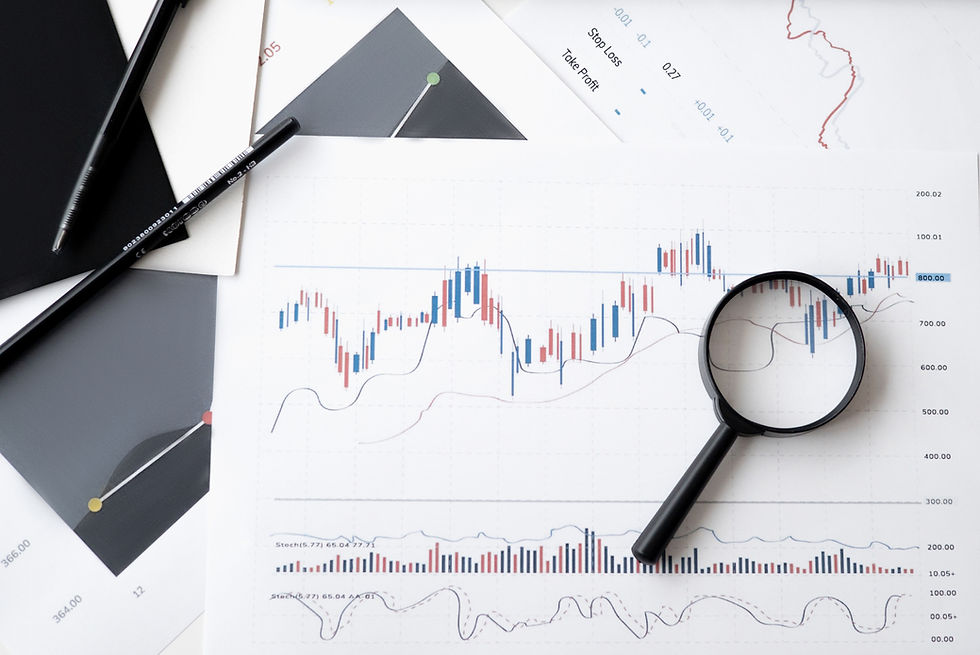Managing Risk through Stops and Position Sizing
- Markets & Mayhem

- Dec 5, 2023
- 2 min read
Stop orders, commonly known as stop-loss orders, are instructions to buy or sell a security when its price reaches a specific level or threshold.
They are essential in limiting potential losses on a position. The usage of stop orders allows traders to set predefined exit points for unsuccessful trades, ensuring emotional biases do not cloud judgment during market fluctuations.
Types of Stop Orders
Standard Stop-Loss Order: This is the most basic form, where a trade is closed at the best available price once the stop level is reached. While straightforward, it may lead to slippage during fast-moving market conditions.
Guaranteed Stop-Loss Order: For a fee, this order guarantees execution at the exact stop-loss level, irrespective of market gapping or slippage. It's particularly useful during high volatility periods. They are available at all brokers.
Trailing Stop Order: This dynamic stop order adjusts with the market price, maintaining a specified distance from the current price, thus protecting profits while limiting losses.
Stop-Limit Order: Here, once the stop price is reached, the order becomes a limit order, filled at the stop price or better. However, there's no guarantee of execution if the market doesn’t reach the limit price.
Stop Placement Strategy
The placement of stop orders is not a one-size-fits-all approach; it requires a strategic understanding of the instrument's volatility. Here are key considerations:
Understanding Volatility: Volatility reflects the degree of variation in a trading instrument's price over time. High volatility implies larger price swings, necessitating wider stops to avoid premature exit. Conversely, lower volatility might allow for tighter stops.
Measuring Volatility: Volatility can be easily measured using statistical tools such as:
Standard Deviation: Reflects the amount of variation or dispersion from the average price.
Average True Range (ATR): A more common tool in trading that measures market volatility by decomposing the entire range of an asset for that period.
Bollinger Bands: This tool uses a moving average with two trading bands above and below it, varying in distance based on volatility.
Position Sizing Based on Volatility
Adjusting Position Size: The more volatile an instrument, the smaller the position size should be to maintain a balanced risk profile. This approach ensures that even with wider stop-losses in volatile markets, the total risk remains consistent.
Risk Tolerance: Position size must also be determined based on individual risk tolerance. Typically, it's advised not to risk more than a small percentage of the trading capital on a single trade.
Closing Thoughts
Trading is not easy, but we also shouldn't make it harder than it has to be.
If you size your positions properly, place your stops thoughtfully, and focus on a systematic approach to your trading, you're much more likely to realize consistency and remove a lot of the emotion that can cloud your execution.

.png)



Mayhem, thanks for this writeup! You mentioned guaranteed stop loss orders being available at all brokers. I did a bit of digging and just can't find a way how to set that up on IBKR TWS. I know you also use this broker and would love to hear what I'm missing if you happen to know . Thank you